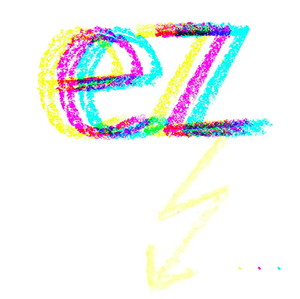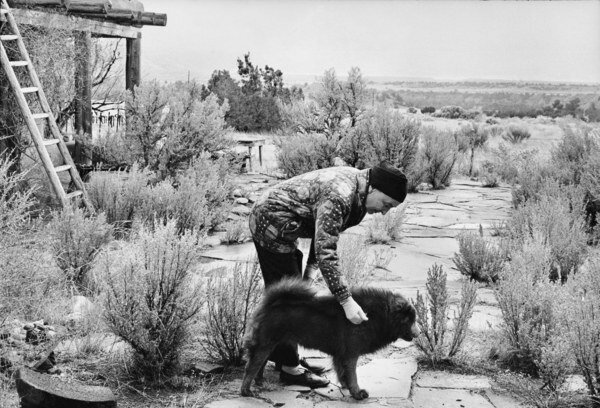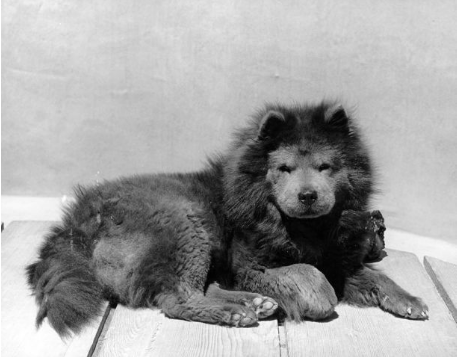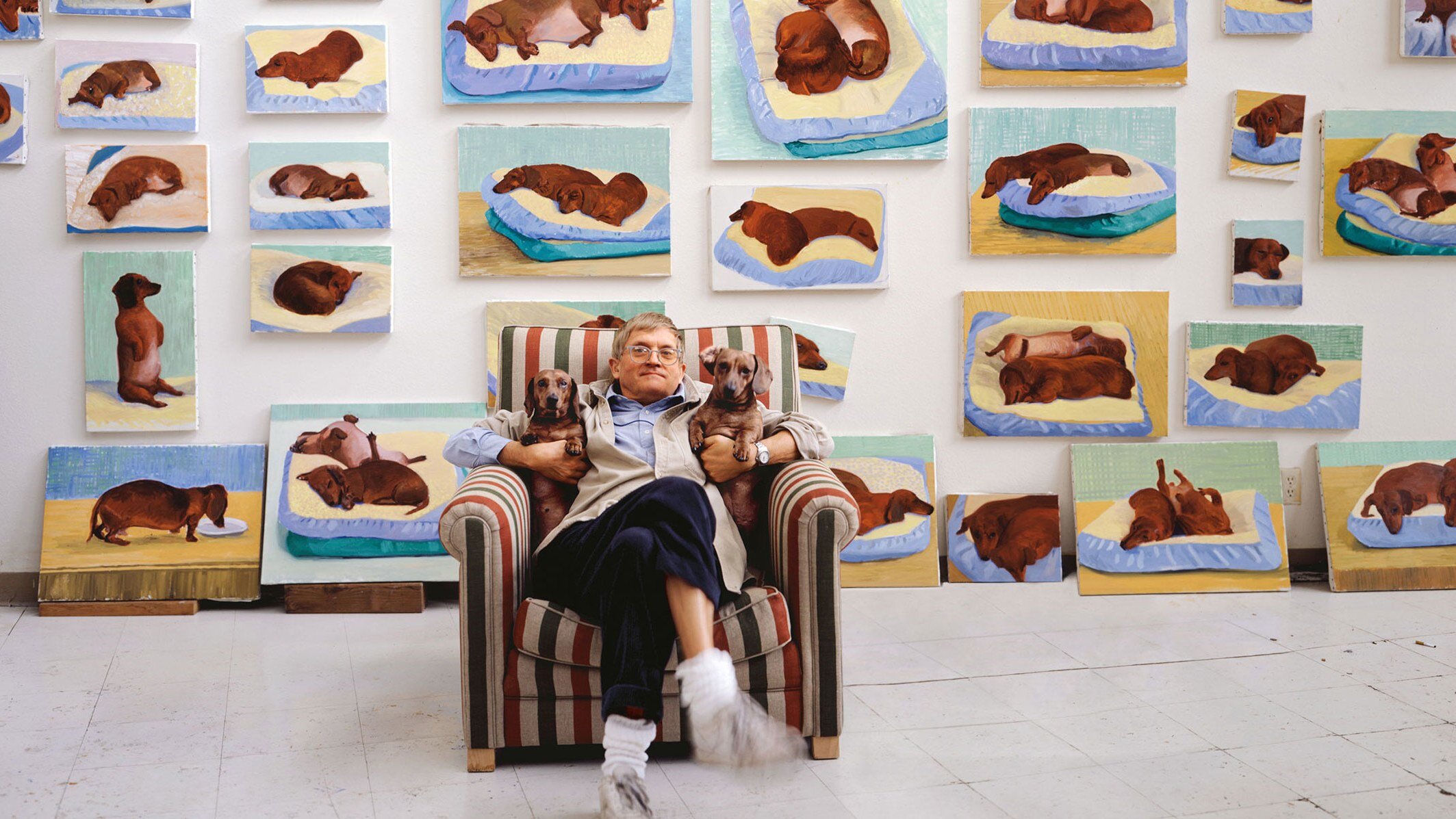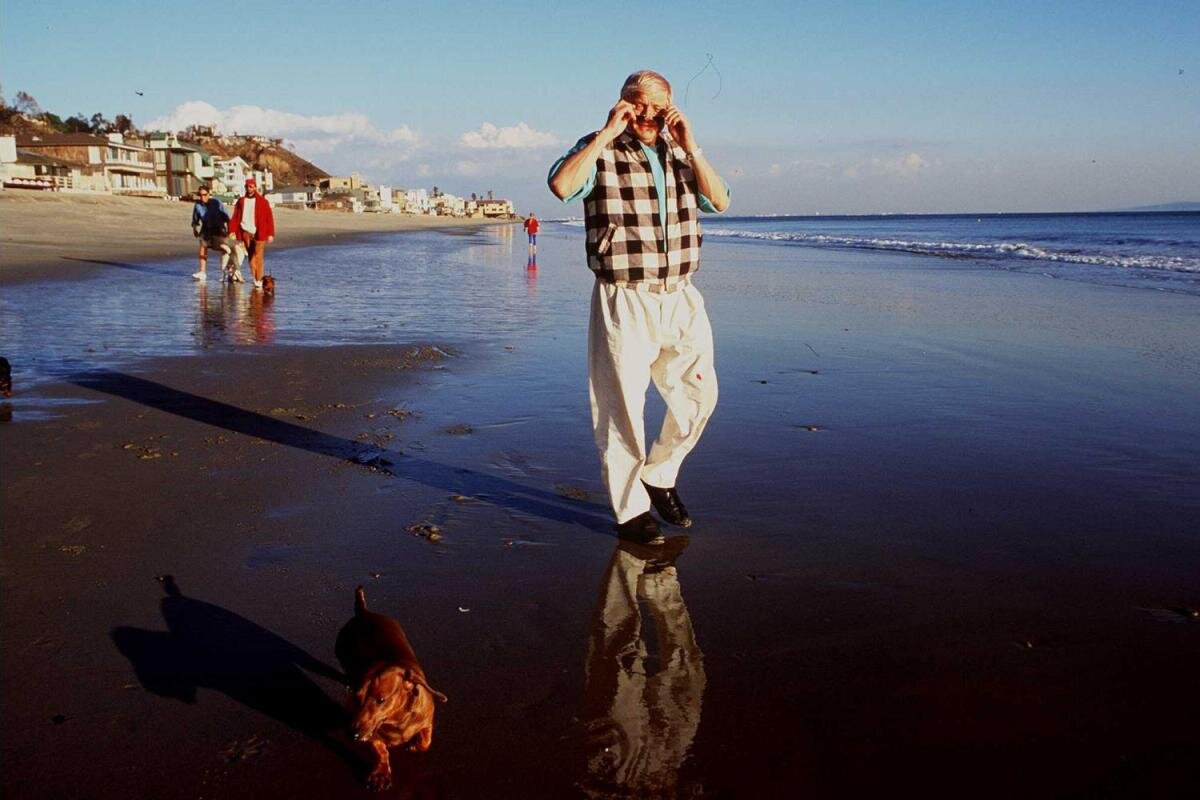Three years after permanently moving to New Mexico, Georgia O’Keeffe received a Christmas present that would change her world; two ‘blue’ Chow Chow puppies.
It was the beginning of a love for the breed that lasted a lifetime and she went on to raise a total of six Chow companions, first Bo and Chia, later Inca, Bo II and Chia II and finally Jingo. All of them big and beautiful beasts, that she lovingly called her "little people".
Miss O’Keeffe’s New Mexico life was very much centered around the dogs and their loving care. When it got very hot one summer, she stopped going out on painting trips in her car, as the heat was too much for the dogs and she couldn’t bear to leave them.
Another time, she told an interviewer that it wasn’t possible to install a new heater at the ranch, because the only place that heater would fit, was her dog’s favourite sleeping spot.
Even the hair they shed in spring was saved once, to have it woven into a warm shawl.
And when her eyesight began to fail in the 1970s, she had white carpet laid in her Abiquiu studio, just so she could see the dark haired dogs better.
C.S. Merrill wrote about the special bond in her book ‘Weekends with O’Keeffe’, revealing Georgia O’Keeffe’s humorous side in doing so:
“She reached out and patted Jingo. The dog and Miss O’Keeffe had quite a rapport between them.
Miss O'Keeffe was telling little jokes about her, like she's so huge that she would run up to you and affectionately jump on you and knock you over, and she would walk halfway around the house in the morning just to avoid her, because she's so huge.
She said to her, “Jingo, you know the most beautiful thing about you is your tail.”
O’Keeffe made sketches and photographs of the Chows and often, she wrote about them and how they made her feel.
In a note to a friend, she shared:
“Bo and Chia astonish and amuse me, they seem to belong to adobe- a snowy world”
And when travelling away from Abiquiú in the autumn of 1960, in a letter to her sister Claudia:
“I have thought often of the dogs- wondered if they slept in your room or if they bothered you and were put out.
I have gotten so that I like having them in the room at night even if it sometimes is a little trouble – I probably miss them more than any other part of the house.”
The Chows seemed to be on her mind constantly, even after their passing. When Bo, her absolute favourite, tragically died after being hit by a truck, she buried him beneath a cedar tree at the White Place and wrote:
“I like to think that probably he goes running and leaping through the White Hills alone in the night."
They say the breed specific characteristics of the Chow Chow are being fiercely loyal, devoted and protective, with a proud and independent spirit. This literally sounds like a perfect match for Georgia O’Keeffe, who in her later life mentioned in an interview:
"It seems to be my mission in life to wait on a dog."
…now I just like to think, that instead of waiting, they’re walking, all together through their beloved White Hills.
